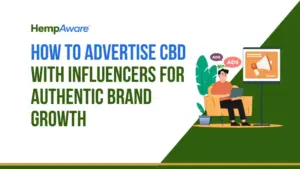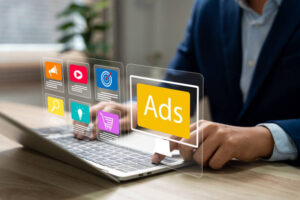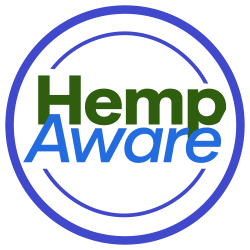How to Design Winning Native Ads for CBD Products—even in Cases When Regulations Are Strict?
Online marketing of CBD products is not like walking in the park. The regulations seem to be always shifting; your ads are turned down for no apparent reason; and there is fierce competition. One of them is native advertising for CBD businesses.

The good news is native advertising offers CBD companies a real, scalable possibility. Good native ads mix with material your potential consumers already adore, unlike flashy banners or annoying popups. The outcome was greater confidence, greater participation, higher sales.
Read on if you wish your next campaign to be among the noise cut through. Step-by-step, I will walk you through creating excellent native ads for CBD.
1. Nail Down Who You’re Talking To: Deep Audience Knowledge Forms the Basis of Any Successful Campaign
One-size-fits-all is not what CBD offers. Some users want pain alleviation, some better sleep, some are trying to control anxiety or just chill after work.
Your perfect buyer can be found here:
Build a buyer persona: Most likely to want your CBD line are retired athletes, working professionals, wellness-conscious mothers.
Get detailed: Do they follow health trends for chronic problems or show interest in “alternative medicine”?
Speak in their tongue: Write like you are addressing one person. Turn away jargon. Clear communication and empathy prevail.
If your product aids in sleep, for instance, your messaging and images should target those exhausted, tossing-and-turning people—not extreme athletes (unless your product is especially for them!).
2. What distinguishes a Native Advertisement?
Native adverts should seem and feel like a natural fit for the material your viewers already appreciate. They need not to yell “ad.”
Parts of a deadly native advertisement:
Headline: Approach it personally and relatable. For instance: “Tired of restless nights”? Find a mild, vegetarian sleeping aid.
Physical copy: Explore farther; tell a micro-story, arouse emotions, clear questions.
Imagine unwinding after work and at last feeling calm as you curl into bed.
Talk about typical worries: “Is this legal? Can it truly alleviate anxiety?”
Development of trust: Support assertions grounded in data. Link to actual research or endorsements. Never lie too much.
Robust call to action: Lead the user straight forwardly and sincerely. “See what everyone’s talking about—unlock better rest tonight,” says an example.
Every line should inspire faith and propel that next search or click.
3. Make Use of Real-Feel Visuals
Your pictures really matter. Ste clear of generic stock images.
What would be most effective?
Show the item in real life—people using it at home, meditating, or post-workout—in lifestyle shots.
Real users: With permission, if at all feasible feature genuine customers!
Context is king: If your advertisement shows up on a wellness website, make sure the images complement that mood—calm, clean, and inviting.
Close-ups of your product can be helpful, but always give the benefit—relaxation, sleep, happiness—top priority over simply the packaging.

4. Keep 100% Compliant in Marketing. CBD Is Subject to Tight Rules. One Error Can Sink Your Campaign.
Remember these fundamental compliance guidelines:
Refrain from claiming medical expenses. Steer clear of language like “ends pain forever” or “cures anxiety.”
Openly:
State “hemp-derived” and cite its source.
Share THC numbers.
Know the policies: Every platform—social, news, content networks—has separate rules. Always go double-checked.
Frequent updates of your compliance knowledge can help you more safe than outlawed.
5. Your Landing Page Ought to Flow Naturally
The finest native advertisements produce landing pages that seem like a logical next step—not a forced sales pitch.
Guidelines for ideal CBD landing pages:
Regular headline: Keep the same hook from your advertisement.
Simple to read materials: Short sentences, bullets, clean parts.
Teach using dosage information and FAQs.
Transparency for ingredients
Develop trust:
Send actual user quotes.
Safe payment methods
Emphasize the advantages early; never overwhelm guests.
6. How to Record Actual Success (Beyond Clicks)
Likes and impressions, vanity measurements, do not cover the expenses.
Rather, pay attention to:
Clearly defining your objective:
Is sales what I mean here?
Email registration
Free samples?
Keeping an eye on user behavior: Create correct tracking (UTM codes, pixels) to precisely identify the sources of your top leads.
Important indicators to monitor:
Click-through rate (CTR)
Time appearing on the landing page
Conversion ratio
Typical order value
Rate of return visitors
Formula for ROI: one should keep in mind
(Campaign revenue less total expenses) / Total expenses times 100 to get ROI %.
Pro Tip: Before making a buy, CBD consumers generally do research. Use multi-touch attribution—credit all the steps, not only the “last click.”
7. Perfect, Perfect, Perfect
Test-oriented winning marketers are consumed.
A/B test CTAs, graphics, and headlines.
Try fresh ad placements and audience segmentation.
Change your budget: Get really focused on what is working. Cut what is not.
Always be on the lookout for little victories. Over time, they produce really significant outcomes.
8. Create for Steady Expansion
Remember also—the CBD scene changes quickly.
Make sure your campaigns are current.
Update images and messages often.
Reflect fresh research and seasonal patterns.
Ask consumers for reviews and comments.
Invest earnings in fresh material including Q&As, video quotes, influencer relationships.
Transparency and trust are your hidden weapon for fostering loyalty in a cutthroat CBD industry; they are not only catch-words.
9. Go Twice on Material That Converts
If you come upon a headline or narrative perspective that generates results, don’t only applaud. Scale it!
As follows:
Use the message in another context. Create an email series, paid search ad, or even an influencer script from your best-performing native ad.
Divide your readers: Tailor versions for each group even if “better sleep” seems to help older folks but not athletes.
Provide instructional materials. Create blogs or shoot explanatory films on subjects like “How CBD Supports Rest” or “CBD & Muscle Recovery After Sports.” Use your adverts to generate visits to these excellent resources.
Great material not only sells; it also answers questions and gets around objections.

10. Guide Leads, Not Only Pursues the Initial Click
Particularly in CBD, consumer paths are hardly ever one-click and done. Trust is not something you get right away.
Maximize every lead using strategies for cultivation:
Send individual emails following a click—product instructions, success stories, or limited-time deals.
Use native retargeting to attract interested consumers back, stressing reviews, FAQs, or instructional offers they missed.
Remarketing funnels: Send mild reminders or instructional materials for abandoned carts (“Still undecided about CBD? See how our clients responded!”).
11. Your Competitive Edge Is Transparency
Those who buy CBD are smart. They investigate and contrast and find transparency lacking.
Establish strong faith by:
Prominently on your landing pages, publishing lab reports and certificates.
Being direct about sources and components.
Clearly, in simple English, what your product accomplishes and what it does not.
Companies that lead with integrity create devoted followers instead of only fast sales.





